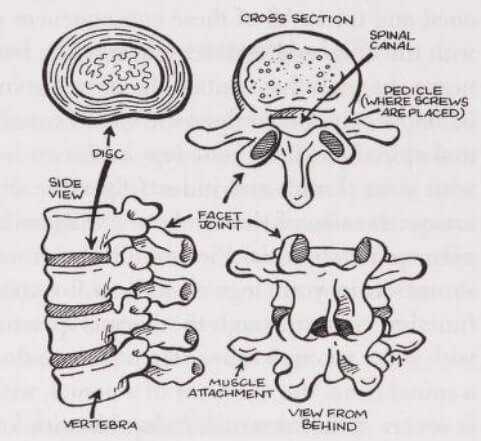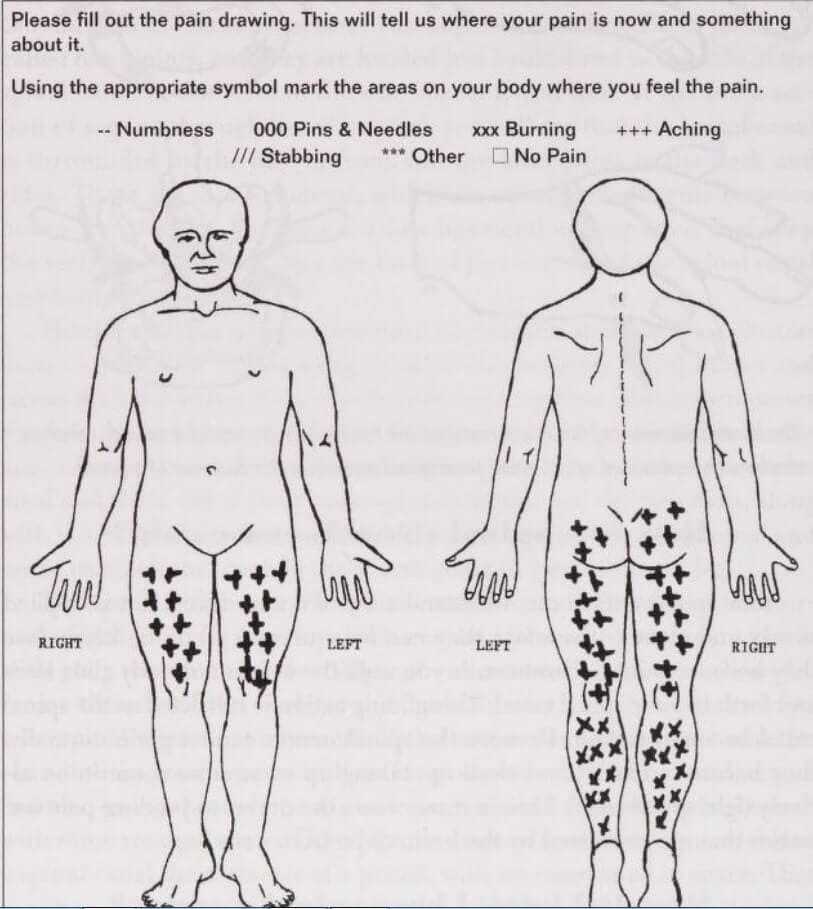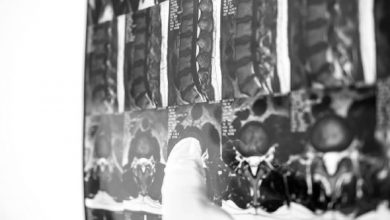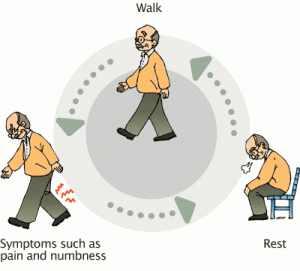Spinal Stenosis: What is it and What can you do about it?

Spinal stenosis literally means constriction or narrowing of the spinal canal. Most commonly it is the result of the disc going flat from aging. To understand how disc degeneration leads to spinal stenosis, we need to look at how the spinal canal is built. Attached to the back of your vertebrae are bony arches. These bony arches are comprised of the walls (pedicles) and the roof (lamina) of your spinal canal.

Attached to the bony arch are the bones that project to the sides, called the transverse processes, and those that project to the back, called spinous process. These processes are for attachment of the muscles of your spine. Finally there are bones on either side that project upward toward you head and down toward your feet at each vertebra, the facet processes. The facet processes from one vertebra form a joint, about the size of the joint in your thumb, with the facet processes of an adjacent vertebra. These joints are called facet joints, and they are located just behind and to the side of the spinal canal at the level of the disc space. If you look at the cross section of a spine through the disc space, you will see that the spinal canal is surrounded by the disc in front and the facet joints to the back and sides. There are also ligaments, which are strong attachments between bones, like the ACL (anterior cruciate ligament) in your knee, that keep the vertebrae together. They are located just in front of the spinal canal and behind it as well.
How do changes in these structures cause spinal stenosis? As a degenerated disc becomes flat, it bulges and causes the bony arches of the vertebrae to come together. This in turn causes the facet joints to be pushed out of alignment and then become arthritic and enlarged. As the disc narrows, the ligaments of the spine become shortened and thick. All of these consequences of the disc degeneration, along with the bulge of the disc itself, result in narrowing of the spinal canal and nerve channels that contain the nerves going to your arms and legs.
How constricted does the spinal canal become? The size of the normal spinal canal in your low back can be pictured by making a circle with your thumb and index finger the diameter of a quarter. Now decrease the size of the circle to the diameter of a pencil to illustrate severe spinal stenosis. Picture all of the nerves for the muscles and the sensation in your legs as well as for your bowel, bladder, and sexual function going through the normal quarter-sized-diameter spinal canal, with some room to spare. Then picture these nerves being squeezed into a spinal canal the diameter of a pencil, with no room at all to spare. That is severe spinal stenosis. A combination of bulging of the disc, thickening of the spinal ligaments, and arthritic enlargement of the facet joints and vertebrae (osteophytes, or “bone spurs”) can constrict the spinal canal to the diameter of a pencil, thus preventing oxygen from reaching the spinal nerves.

How does spinal stenosis cause pain?
Your spinal nerves can withstand a lot of compression if it is applied slowly and evenly. Therefore they can be squeezed pretty tightly before they become painful. However, as you walk the nerves normally glide back and forth in your spinal canal. This gliding action is restricted as the spinal canal becomes tighter. Because the spinal nerves cannot glide normally, they become irritated and swell up, taking up even more room in an already tight spinal canal. This, in turn, causes the nerves to produce pain impulses that are perceived by the brain to be from your legs.
How do I know I have spinal stenosis?
You should suspect spinal stenosis in your low back if you have aching pain in your legs brought on by walking and relieved by sitting (neurogenic claudication). The pain may be localized to your back, or it may radiate from your back to one or both legs, buttocks, thighs, even as far as your calves and your feet. The symptoms of spinal stenosis in your back may be pain in any combination of the locations mentioned above, depending on the level(s), degrees of constriction, and sites of the spinal stenosis. At each of the five discs in your low back there are five sites at which constriction can take place.

Spinal stenosis in the central spinal canal causes classic aching pain in the front and back of your thighs and calves. At each disc level in your spine, the nerve channels can be constricted at two locations on each side, as well as in the spinal canal itself. On either side of your spinal canal the nerves can be squeezed where they begin to exit the spinal canal (lateral recess stenosis, see first picture on this page), in the channel through which the nerve exits the spinal canal (foraminal stenosis). Therefore there are 25 possible sites at which the nerves to your legs can be entrapped by spinal stenosis, in your low back alone!
More often than not, by the time you develop symptoms from spinal stenosis, the nerves are being squeezed at more than one site at the same time. I will explain how we determine exactly where the pain is coming from later in this article.
The classic symptoms of spinal stenosis — aching in the legs with walking that is relieved by rest (neurogenic claudication) — can be confused with the symptoms caused by poor circulation in your legs (vascular claudication). If you have poor blood circulation in your legs, walking may cause aching in your legs that is relieved by rest, very similar to the symptoms seen with spinal stenosis, but with some important differences. When the muscles in your legs do not get enough oxygen because of poor circulation, they produce lactic acid with activity. Lactic acid produces cramping pain in the muscles.
How do I know my pain is from spinal stenosis
and not from poor circulation?
There are some subtle differences in symptoms between the pain from spinal stenosis and poor circulation. Pain from spinal stenosis usually begins in the low back and radiates into the leg(s) and is relieved by sitting or bending over; both maneuvers open up the spinal canal, thus relieving the pressure on the nerves. Patients are frequently confused by the symptoms of spinal stenosis because their walking is limited by leg pain but they are still able to bicycle, dance, or lean on a shopping cart and get around without pain.
All of these postures allow the person to bend forward enough to open up the spinal canal, relieving the pressure on their spinal nerves. When you see someone who is having difficulty walking because of spinal stenosis, they usually walk in a characteristic bent- forward position. Patients with spinal stenosis will tell you that they have good days when they can walk unlimited distances and bad days when their walking is very limited. The symptoms of poor circulation to the legs start as a cramping sensation in the calves and radiate proximally upward into the whole leg. The pain is not relieved by bending forward.
The symptoms progress with physical activity as the lactic acid in the oxygen-starved muscles builds up. The person experiencing these symptoms would rather stand than sit for relief because blood flow to the legs is stronger while standing than sitting. They cannot walk, bicycle, dance, or take part in any physical activity without developing muscle pain. The symptoms of vascular claudication are the same every day.
Spinal stenosis and poor circulation to the legs is more common after the age of 60 and can occur simultaneously, so it is possible to have symptoms of both conditions at the same time. I have seen patients who could clearly describe to me the symptoms of both. I can advise these folks which symptom is coming from which condition, and then determine from them which pain they more urgently want to be relieved of. Most people can tolerate vascular claudication better than neurogenic claudication and want their spinal stenosis fixed first. However, your PCP should refer you to a vascular surgeon to help you decide whether to pursue surgery for vascular claudicaton.
How Is the pain from spinal stenosis different
from a herniated disc?
Sciatic leg pain from a herniated disc can sometimes be confused with pain from spinal stenosis. It is important to distinguish which condition the symptoms stem from because herniated discs will usually shrink with time and the pain will resolve on its own, whereas the symptoms from spinal stenosis may gradually become worse over time and eventually require surgery for relief. Disc herniations, produce pain by compressing, stretching, and chemically irritating the spinal nerve.

Leg pain from a herniated disc usually radiates along the course of a spinal nerve and is present even at rest. In contrast, the pain from spinal stenosis radiates over the course of more than one nerve and is relieved by sitting or bending over. The ability to bend over at the waist while standing and to lift the symptomatic leg up while lying face up is limited by a herniated disc. Bending and straight- leg raising are not limited and in fact may relieve the pain from spinal stenosis.

A disc herniation may contribute to spinal stenosis, particularly when it occurs in the lateral recess or foramen of the spinal canal. This can happen when a disc herniation occurs in a small or misshapen spinal canal. The normal spinal canal is triangular in shape and the diameter of a quarter. Approximately 10 percent of people are born with a cloverleaf-shaped spinal canal that approaches the size of a nickel or smaller. This is called congenital spinal stenosis. Smaller degenerative changes in the disc and facet joints may result in more significant encroachment on a misshapen or small spinal canal than they would on a normally shaped and sized spinal canal. This is particularly true in the lateral recess, that area on the side of the spinal canal where the nerves just begin to enter the channel to exit the canal. A small disc bulge or herniation in a congenitally small lateral recess may result in severe leg pain, whereas it would cause no symptoms in a normal lateral recess. Lateralrecess stenosis with a disc herniation may cause a combination of the classic symptoms and physical findings seen with either condition alone.
A disc herniation may contribute to spinal stenosis, particularly when it occurs in the lateral recess or foramen of the spinal canal. This can happen when a disc herniation occurs in a small or misshapen spinal canal. The normal spinal canal is triangular in shape and the diameter of a quarter. Approximately 10 percent of people are born with a cloverleaf-shaped spinal canal that approaches the size of a nickel or smaller. This is called congenital spinal stenosis. Smaller degenerative changes in the disc and facet joints may result in more significant encroachment on a misshapen or small spinal canal than they would on a normally shaped and sized spinal canal. This is particularly true in the lateral recess, that area on the side of the spinal canal where the nerves just begin to enter the channel to exit the canal. A small disc bulge or herniation in a congenitally small lateral recess may result in severe leg pain, whereas it would cause no symptoms in a normal lateral recess. Lateralrecess stenosis with a disc herniation may cause a combination of the classic symptoms and physical findings seen with either condition alone.





